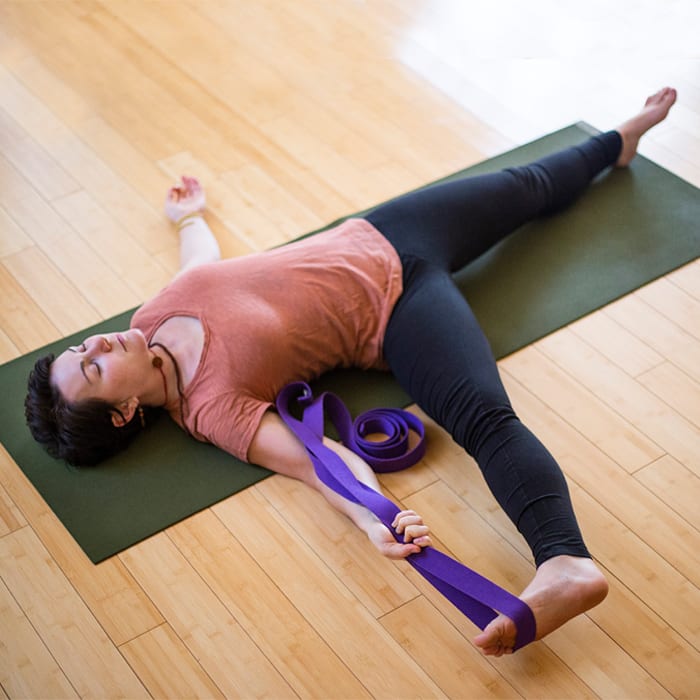
Constipation yoga has many benefits, but they don't just relieve abdominal pain. The first one involves a simple, but effective twisting pose that stretches your abdominal muscles and stimulates the digestive system. This yoga pose will improve your bowel movements and can help with bloating and periods. Listed below are some of the most effective poses to alleviate constipation.
Cat-cow position: This pose activates core muscles in the abdominal region, stimulating midsection movement and stimulating the abs. This pose requires you to exhale air from your belly. This helps the intestines work. This is known to push the poop buttons. This pose is great to pair with a healthy diet, and plenty of sleep. It can help alleviate your constipation issues.
Crescent Lunge Twist, a pose in which you twist your torso. This pose is ideal for beginners, as it doesn't require any twisting. It can also ease constipation-related gas. Wind-Relieving pose: This yoga position is great for people who are suffering from constipation. It's an excellent inversion and can help to relieve gas. This is a great position to start with for beginners.

Crescent Lunge: This basic yoga pose stimulates the digestive tract and blood flow to the internal organs, as well as stretching the entire GI tract. Crescent Lunge: Stand on your hands and knees, with your palms facing inward. Tuck your right knee into your chest. Now, stretch your arms and legs. Tuck your stomach toward your navel. Repeat the exercise on the reverse side. This pose will strengthen your abdomen, bowels and stomach.
Wind-Relieving Pose: This yoga asana is beneficial for constipation. This exercise strengthens abdominal muscles and eliminates excess gas and acid. It is one of the most advanced asanas, so it's important to be careful while doing it. It is important to avoid straining your abdomen while doing this yoga pose. If you aren't confident about your ability to do this pose, you can slow down and increase the speed.
Yoga can help with digestion, stress reduction, and constipation. Yoga can help you regulate your body's release of chemicals. To balance serotonin levels and cortisol, strengthening the parasympathetic nervous systems will help.
The universal spinal twist aligns your spine and abdominal organs. This prevents gastritis. It also reduces belly fat. This asana also has constipation relief benefits. It is one the most well-known supine yoga poses for constipation. It is especially beneficial for those with high blood pressure or other medical conditions.

Aside from constipation yoga, there are many other remedies to address this condition. Warm water and walking regularly are great ways of reducing stress and improving the digestive system. You will also be able to eliminate chronic constipation through a healthy diet and improve your overall digestive health. To improve your posture, and to relieve pain in the back, you can try a gentle, seated downward-dog pose. This position is especially beneficial for chronic constipation sufferers.
Constipation yoga is well-known for its many benefits. However, it is worth considering yoga to alleviate the discomfort. You'll be able pass stool without discomfort and pain if you follow these tips. So, don't delay. Keep a positive mindset and start practicing this yoga pose today!
Yins, Anti-Constipation, and Other Benefits of Standing Poses
Ardha Matsyendrasana (also known as needle pose) is a way to massage your digestive tract. This pose helps to cleanse the body and improve digestion. It is especially effective in treating constipation. Sitting for five to seven consecutive minutes is a good option if your condition prevents you from sitting for extended periods. Take a deep breath before you begin to focus on the pose.
FAQ
Do Men Need A Gym Membership?
A gym membership does not have to be required for men. A gym membership will make your money more valuable.
Many gyms offer free trial memberships that allow you to test the facilities before signing up for any monthly fees.
You can use the gym at any time you want, and it doesn't cost anything. Your membership can be cancelled at any time you choose to love it or not.
What is your favorite workout to build muscle mass?
There are two main things you must do when building muscle mass. These are compound movements and isolation exercises. Isolation exercises target specific muscles while compound moves focus on multiple groups at once.
You can improve your workouts by choosing exercises that challenge all major muscle groups. This will ensure that you work hard every session.
To keep track of what you have done, use an app called MyFitnessPal. It can track everything from calories burnt to weight lifting. You can even create customized meal plans that are based on your goals.
How to Build Muscles Fast
It is important to eat healthy food and lift weights frequently in order to quickly build muscle.
When you're fresh and ready to do something, early morning is the best time for working out.
Exercises such as push-ups and bench presses are good options.
Take a look at different weight training options and make sure to drink plenty of fluids throughout the day.
Is Cardio Better Than Strength Training?
Both are equally beneficial. Cardio is better if you are looking to build muscle faster.
Cardio burns more calories per minute than strength training and burns more fat.
Strength training helps build muscle mass. But it takes longer than cardio to accomplish this goal.
Statistics
- Get free shipping and 25% off today. (healthline.com)
- By John Thompson Take a whopping 38% off a set of PowerBlock Pros. (menshealth.com)
- According to the American Academy of Dermatology (AAD), men over 50 are at a heightened risk of developing it. (healthline.com)
- The PRS enabled risk stratification for overall prostate cancer and lethal disease with a four-fold difference between men in the highest and lowest quartiles (HR, 4.32; 95% confidence interval [CI], 3.16-5.89). (pubmed.ncbi.nlm.nih.gov)
- 10 pounds in a month is likely during a lean bulking phase, especially for beginners. (muscleandstrength.com)
External Links
How To
What nutrients do men need each day?
Healthy growth and development of men requires healthy nutrition. The body needs vitamins, minerals as well as proteins, carbohydrates and fats.
Males also require specific nutrients at certain times of the day. When you're sleeping, your body uses energy from food for hormones, proteins, and enzymes. You use protein to build muscles and repair damaged tissue when you wake up.
Your body stores extra energy as glycogen and breaks down fat at night. During this time, your body needs fewer calories but still needs sufficient nutrients. If you feel hungry, you can have a snack in the evening.
To fuel your muscles while you train, you will need sufficient carbs as well as protein. Muscle soreness can occur if you work out hard.
To prevent this from happening, you need to consume carbs or protein within two hours. Your body will break down stored glycogen to provide glucose for energy.
Additionally, it is important to eat protein right away after your workouts are over. This will prevent muscle tissue from being damaged while you sleep.
Lactic acid is produced by the body during periods of intense exercise. The body produces lactic acid when there is too much activity. This can cause fatigue. To avoid this, you should eat foods rich in carbohydrates, such as fruits and vegetables.
Carbohydrates can give your body the energy it requires to recover from intense exercise.
You may also want to include lean meats and fish, as well as yogurt, cheese, yogurt, beans and nuts in your diet.
These foods all contain high-quality proteins. Protein promotes muscle growth, and helps repair damaged tissues. Protein is also necessary for the production of sex hormones such as testosterone.
To maintain healthy skin, hair, and joints, you also need sufficient dietary fats. Healthy men require between 20% and 35% of total caloric intake from fat.
Fat helps protect your heart health and prevents cancer. It helps keep your brain working properly.
Vegetable oils such as sunflower oil and soybean oil can provide most of your fat needs.
These oils contain high levels of monounsaturated fat acids (MUFAs). MUFAs reduce cholesterol and inflammation. They protect your cells against free radical damage.
Saturated oils (SFAs), found primarily in animal products such meats, dairy products and butter, are known to raise LDL ("bad") cholesterol. SFAs can increase LDL ("bad") cholesterol as well as triglycerides. They promote weight gain as well as belly fat.
Plant-based oils such as vegetable oil, nuts, seeds, or grains are rich in polyunsaturated fats (PUFAs). PUFAs reduce inflammation and improve cardiovascular function. They also reduce blood sugar, cholesterol, and other inflammatory factors.
Low HDL ("good") cholesterol can lead to erectile problems in men. Consuming high amounts of saturated fats can increase bad cholesterol and lower good cholesterol.
Men who eat a lot of red meat or pork develop prostate problems because they contain large amounts of nitrates. High temperatures can cause nitrates to become nitrosamines. These compounds can cause cancer.
Nitrites and other harmful chemicals are common in processed meats. Avoid them completely.
The American Heart Association recommends that you limit your intake of red meat to 2 per week. Instead, opt for poultry, fish, legumes and tofu as well as whole grains bread and cereals.